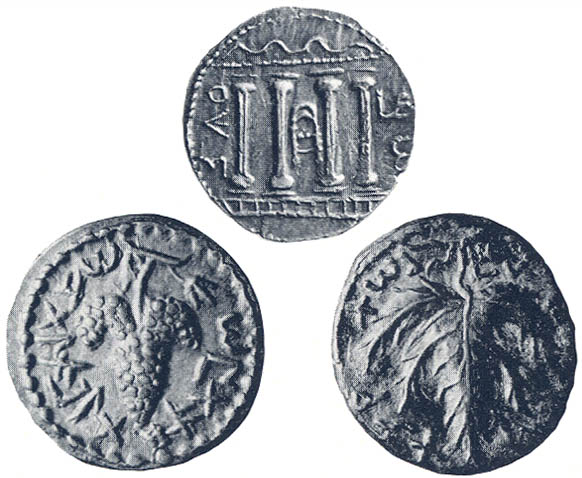Image Details

The sanctuary facade, as it appears on the obverse side of a tetra-drachma (top), attributed to the third year (134–135 A.D.) of the Second Jewish Revolt. Although other scholars consider this to be a depiction of the Temple’s outer facade, the author argues that such an interpretation is inconsistent with the textual descriptions, which support his view that this coin shows the Sanctuary’s facade and portal. The four columns flanked the entrance. The wavy line above the columns may represent the golden vine, a frequent symbol, in the Bible, of the people of Israel and a decoration above the Sanctuary’s portal according to both the Middot and the historian Flavius Josephus. The object between the columns may be the narrow face of the shewbread table. The coin’s inscription, like that on the di-drachma, says “Shimon” (Simon), the first name of Bar-Kokhba, leader of the Second Jewish Revolt.
Josephus also says that clusters of golden grapes hung from the vine above the portal. Although such grape clusters and leaves do not appear on the tetradrachma, some Bar-Kokhba bronze coins of lower denomination do show them (lower left and right). The inscription surrounding the bunch of grapes (lower left) says, “First Year of the redemption of Israel.”
